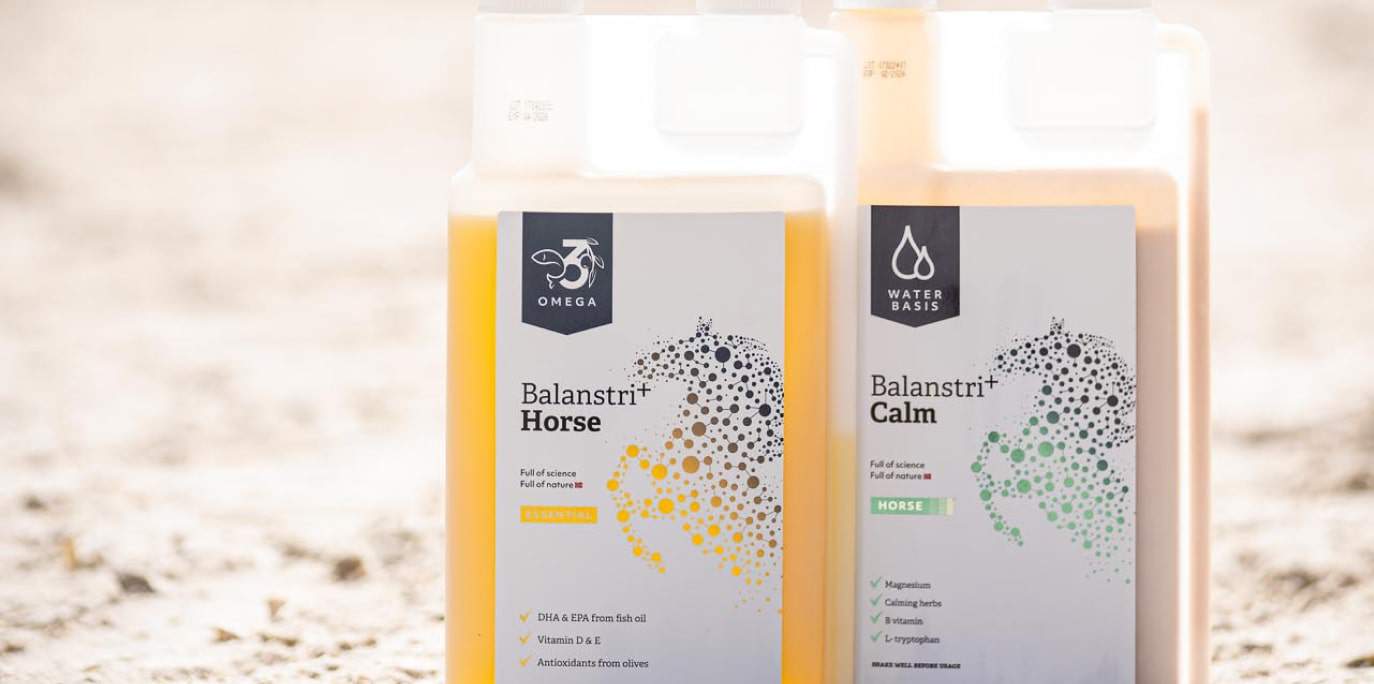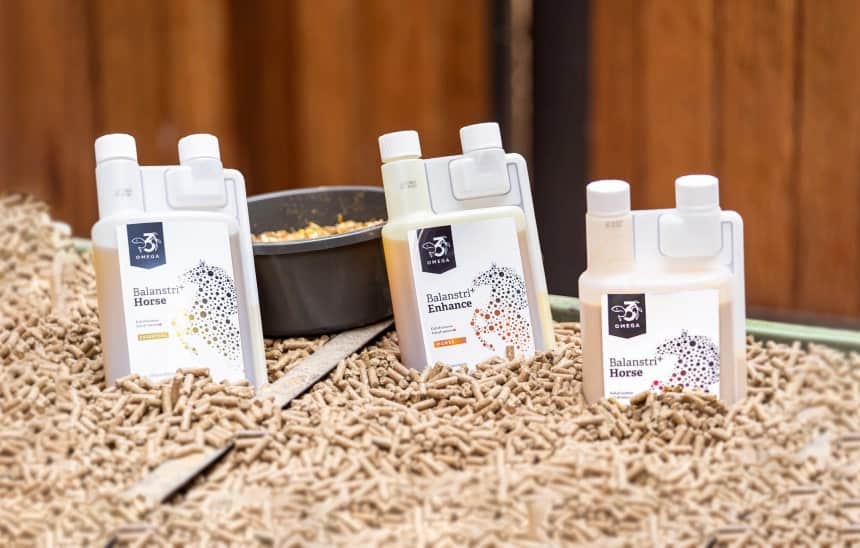

The composition of the 11 fatty acids jointly influence the flexibility of cell membranes, a condition that is essential for active, healthy animals. Flexible blood cell membranes are needed to bring blood to all parts of the animal body, since the diameter of a blood cell is comparable to the diameter of the smallest capillary blood vessels. Stiff blood cells may not penetratethecapillaries,andtheanimalmaynotgetthebloodtoallpartsneededforoptimal performance.
The Inflammatory climate influences both acute and chronic conditions. The inflammatory climate is characterized by the composition of polyunsaturated long chain fatty acids (>= 20 carbon atoms in the fatty acids chain) of the Omega-6 type (C20:3+C20:4)andOmega-3type (C20:5 + C22:5 + C22:6). These fatty acids are all measured by the Balanstri dried blood spot test.
The Balanstri Health Concept guidelines are consistent with the principle of Safe Feed for Animals. The composition of Balanstri oil does not induce changes in lipid peroxidation in the animal body, which might raise concern in relation to cardiovascular disease (CVD) risk, as well as other chronic conditions. The oxidative stability of Balanstri is secured by the combination of fish oil and a specially selected olive oil.
During inflammation, several cell types secrete phospholipase A2 that catalyzes lipid oxidation in bad cholesterol, the LDL particles in blood. Lipid oxidation results in the generation of aldehydes that substitute lysine residues in the apolipoprotein B-100 moiety. Lipid together with protein oxidation in bad LDL cholesterol results in the generation of the harmful oxidized LDL. A cause and effect relationship has been established between the consumption of olive oil polyphenols (standardized by the content of hydroxytyrosol and its derivatives) and protection of LDL particles from oxidative damage. This principle has been built into Balanstri oil, a principle that also works to stabilize the oil against lipid peroxidation on the shelf, as seen in Figure1.
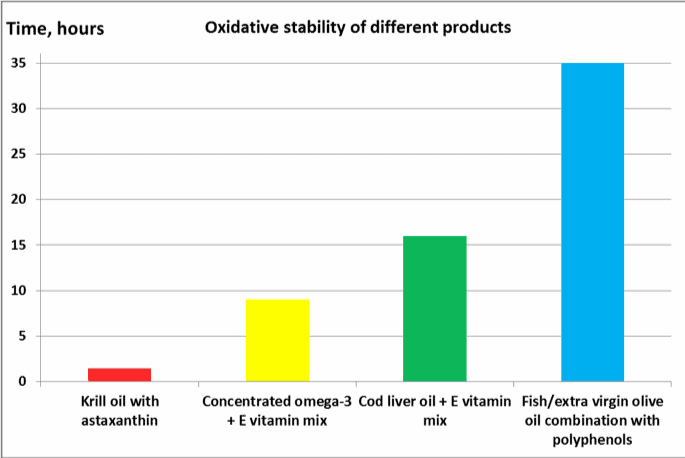
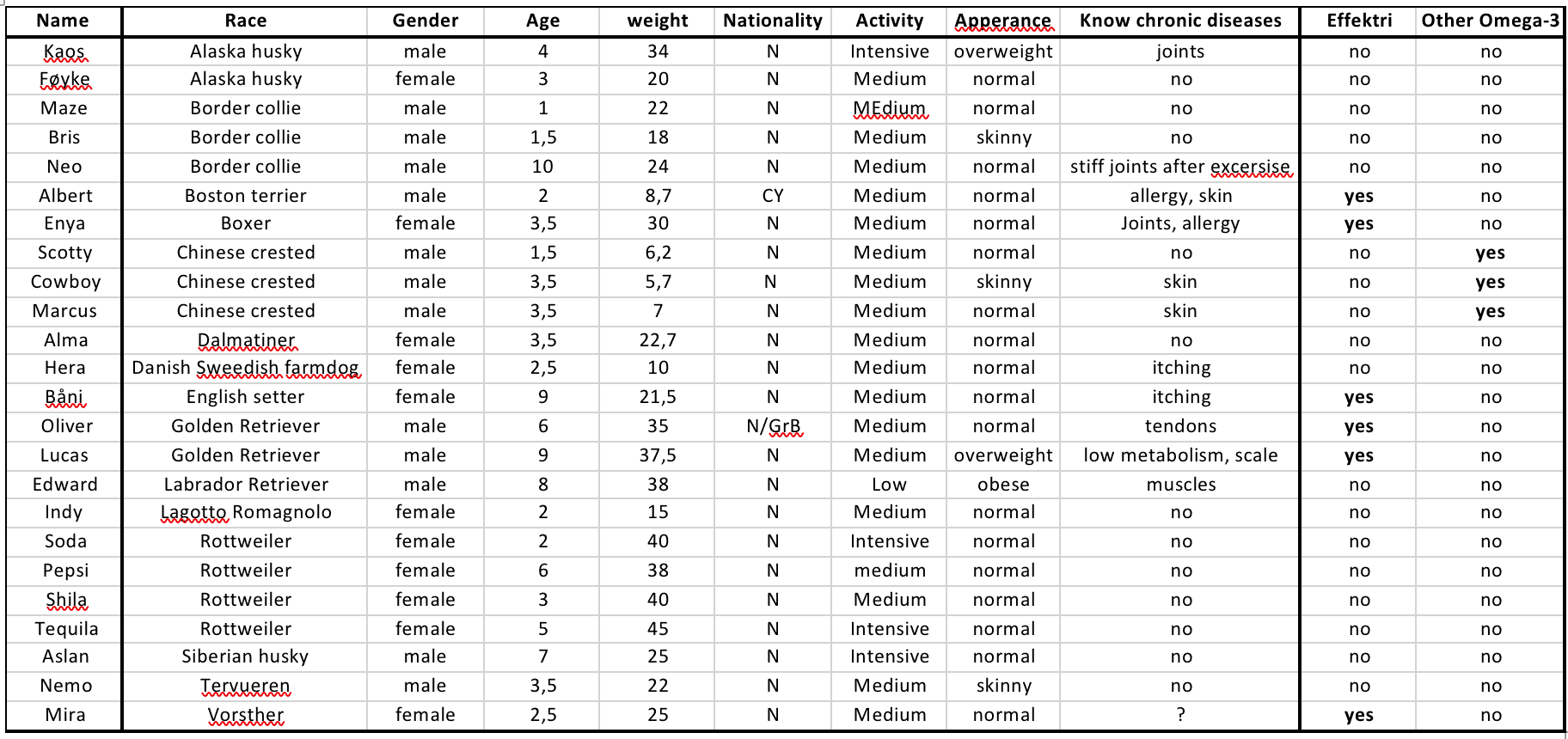
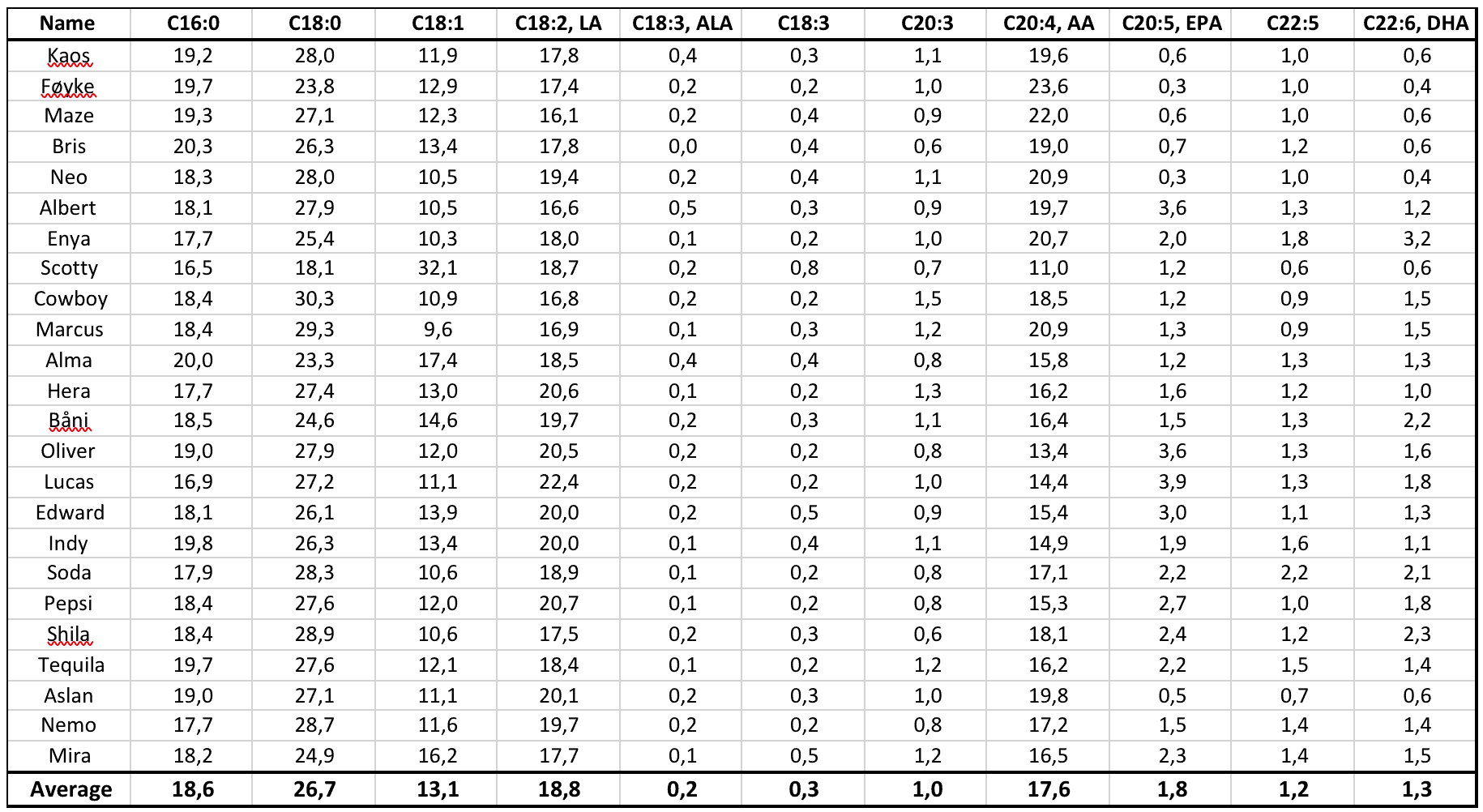
The Omega-3 Index is the sum of the marine omega-3 fatty acids EPA and DHA. The Omega-3 Index shows if the omega-3 supplement consumed by the dog is bioavailable in the blood, which is necessary for influencing the inflammatory climate. The Omega-3 Index should preferably be above 6%.
Table 4 and Figure 2 clearly shows that Omega-3 from Balanstri is absorbed by the dogs and is bioavailable in the blood, while other Omega-3 supplements consumed by the dogs give the same Omega-3 Index as dogs not consuming any omega-3 supplements. The reason may be the use of oxidized fish oil, or to little fish oil. Some of the dogs not taking any food supplements (Shila, Pepsi, Soda and Edward) have Omega-3 Index values indicating that they have a diet containing fatty fish, maybe as fishmeal. The Omega-3 Index should preferably be above 6%. Thus, the dogs using Balanstri should also increase their daily dosage as recommended later in this white paper.

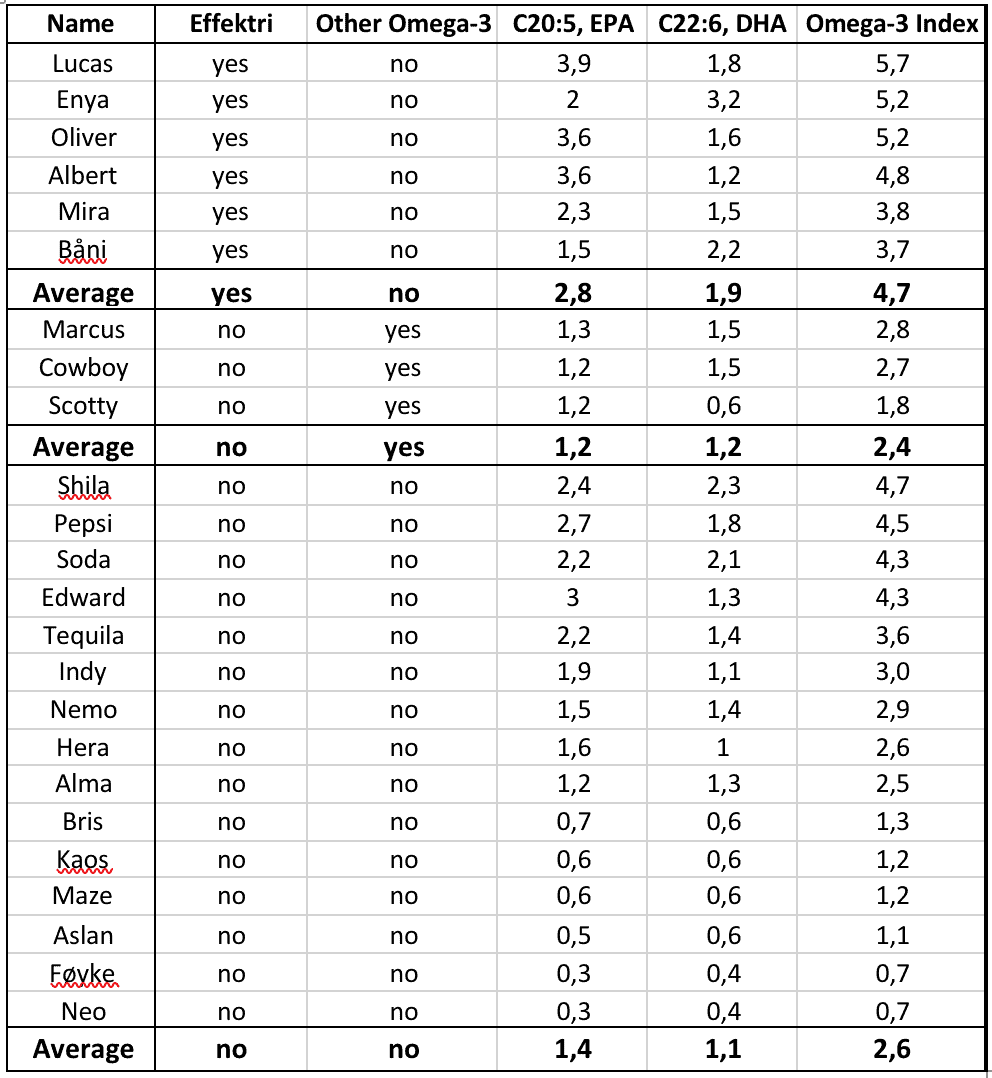
Dietary Index (Tot. Omega-6/Tot. Omega-3)
(C18:2 + C18:3 +C20:3+C20:4)/(C18:3 + C20:5 + C22:5 + C22:6)
The fatty acid composition of blood cell membranes is in equilibrium with the fatty acid composition of whole blood. In cell membranes saturated-(SAFA) and mono unsaturated fatty acids (MUFA) provide stiffness due to the shape of these fatty acids, while polyunsaturated fatty acids (PUFA) provide flexibility. Long chain omega-3 PUFA (LC- omega-3) and long chain omega-6 PUFA (LC- omega-6) are important structural components of cell membranes and contribute to various membrane functions such as fluidity, permeability, activity of membrane-bound enzymes and receptors, and signal transduction. The sources of LC-omega-3 and LC-omega-6 are essential and must be supplied through the diet.
A normal diet provides a surplus of LC-omega-6, SAFA and MUFA. These components shape the cell membrane functionality when LC-omega-3 is depleted. The food supplement Balanstri provides LC-omega- 3 to a normal diet, increasing the LC-omega-3 in blood. Finding a new equilibrium with the fatty acid composition of the whole blood, many of the SAFA and MUFA in cell membranes will be substituted by LC-omega-3 making the cell membrane more flexible andfunctional.
Table 5 and Figure 3 show that Balanstri added to the diet is effective in reducing the ratio between Tot. Omega-6 and Tot. Omega-3 in whole blood independent of races, providing flexibility and functionality to cell membranes.
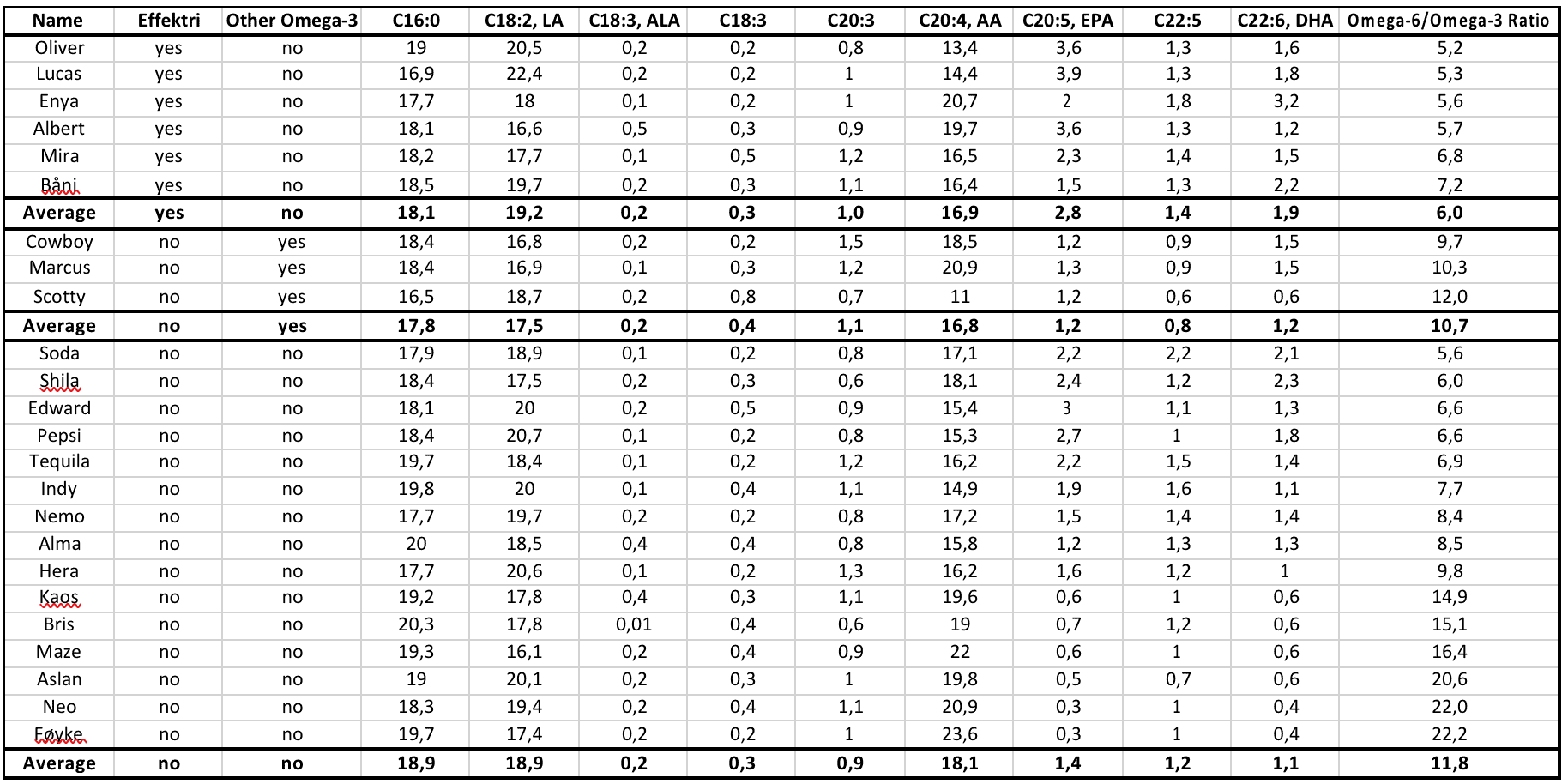

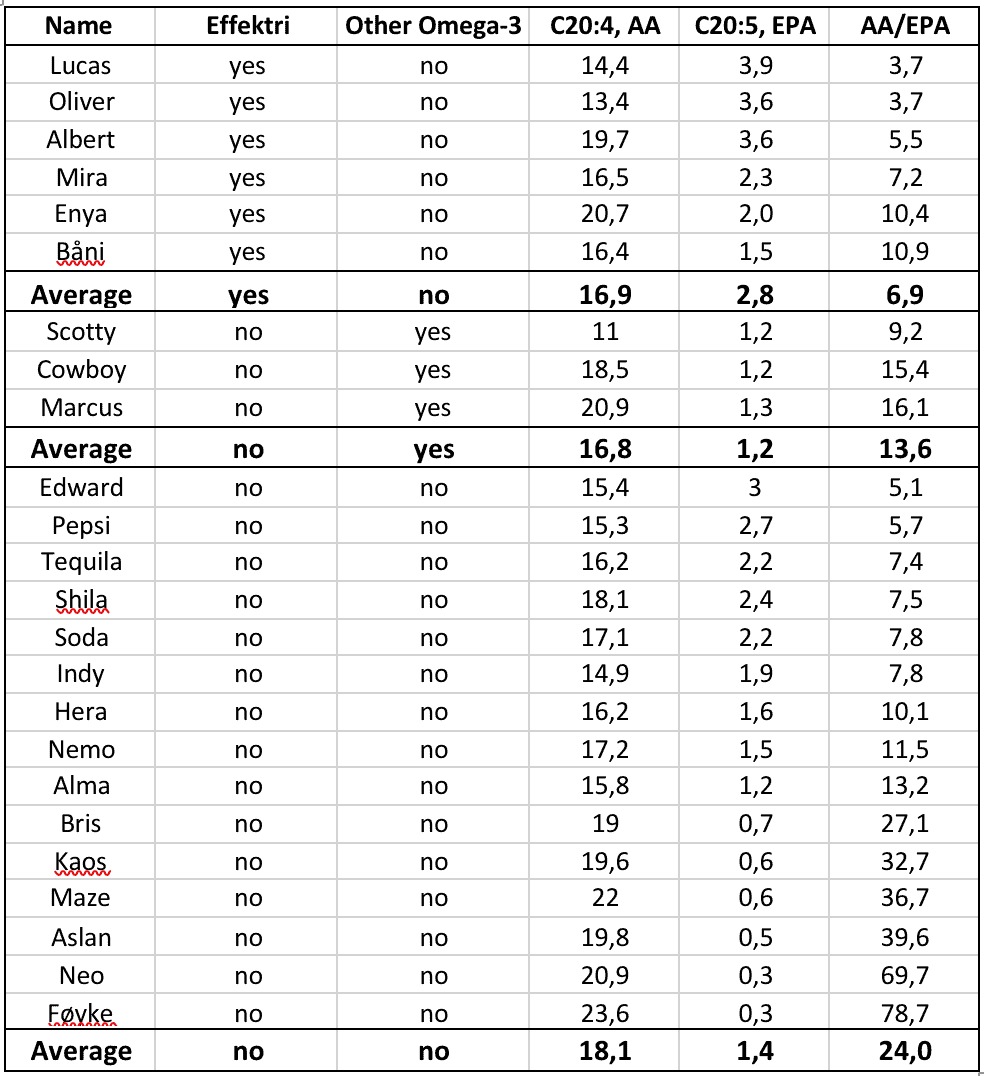
The key link between diet, inflammation and eicosanoids is that the pro-inflammatory eicosanoids are derived from Arachidonic acid (AA), an essential LC-omega-6 fatty acid originating from plants, and the anti-inflammatory eicosanoids that are generated from Eicosapentanoicacid(EPA), an essential LC-omega-3 fatty acid originating mainly from marine sources. Normal diets are often pro-inflammatory containing more Omega-6 than Omega-3, and should be balanced by increased intake of anti-inflammatory LC-omega-3. The AA/EPA Ratio in whole blood provides a picture of the pro-inflammatory status of the diet.
Table 6 and Figure 4 show that Balanstri added to the diet is effective in reducing the AA/EPA Ratio in whole blood independent of races, thus reducing the dietary pro-inflammatory climate.
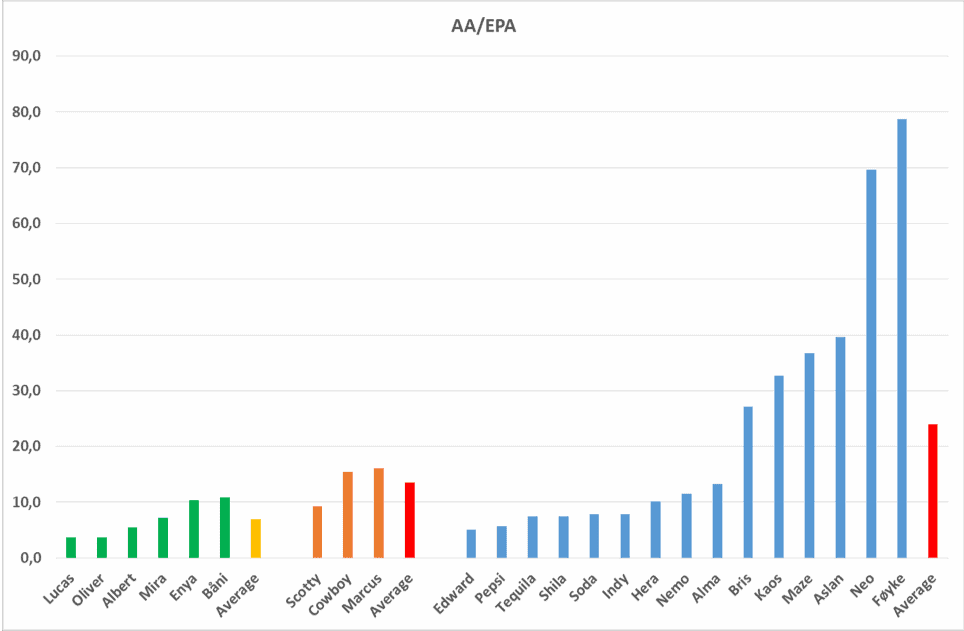
When using Balanstri oil to reduce, to restore or to maintain the dietary and pro-inflammatory indicators of fat metabolism, we need some extra information to be able to provide a correct recommendation for each dog. Thus, the dog owner, when retrieving the fatty acids analysis result by introducing his personal code onto our site will be requested to fill in an online questionnaire providing information about the Dog name, Race, Gender, Age, Weight, Condition, Exercise level and Known chronic lifestyle ailments (see Appendix 1).
To reduce, restore or maintain the dietary and pro-inflammatory indicators of fat metabolism, our Balanstri oil recommendation is primarily based on the body weight of the dog, adjusted for 1) Exercise level, 2) Condition, 3) Known chronic lifestyle ailments, 4) Dietary indicator result and 5) Pro-inflammatory indicatorresult.
A basic daily intake of Balanstri oil of 0.15 ml oil per kg body weight (= 3.8 ml for a 25 kg dog), provides 0.03 g LC-Omega-3 (EPA+DHA) per kg body weight from fish oil (= 0.75 g LC-Omega- 3 for a 25 kg dog). The LC-Omega-3 is protected by 0.06 mg polyphenols from olive oil per kg body weight (= 1.5 mg polyphenols for a 25 kg dog).
Table 7 provides the ml Balanstri oil recommendations for each of the 20 dogs in our example. After treatment as recommended for 120 days, a new test may indicate improvements that may lead to reduced recommended daily maintenance intake of Balanstri for life.
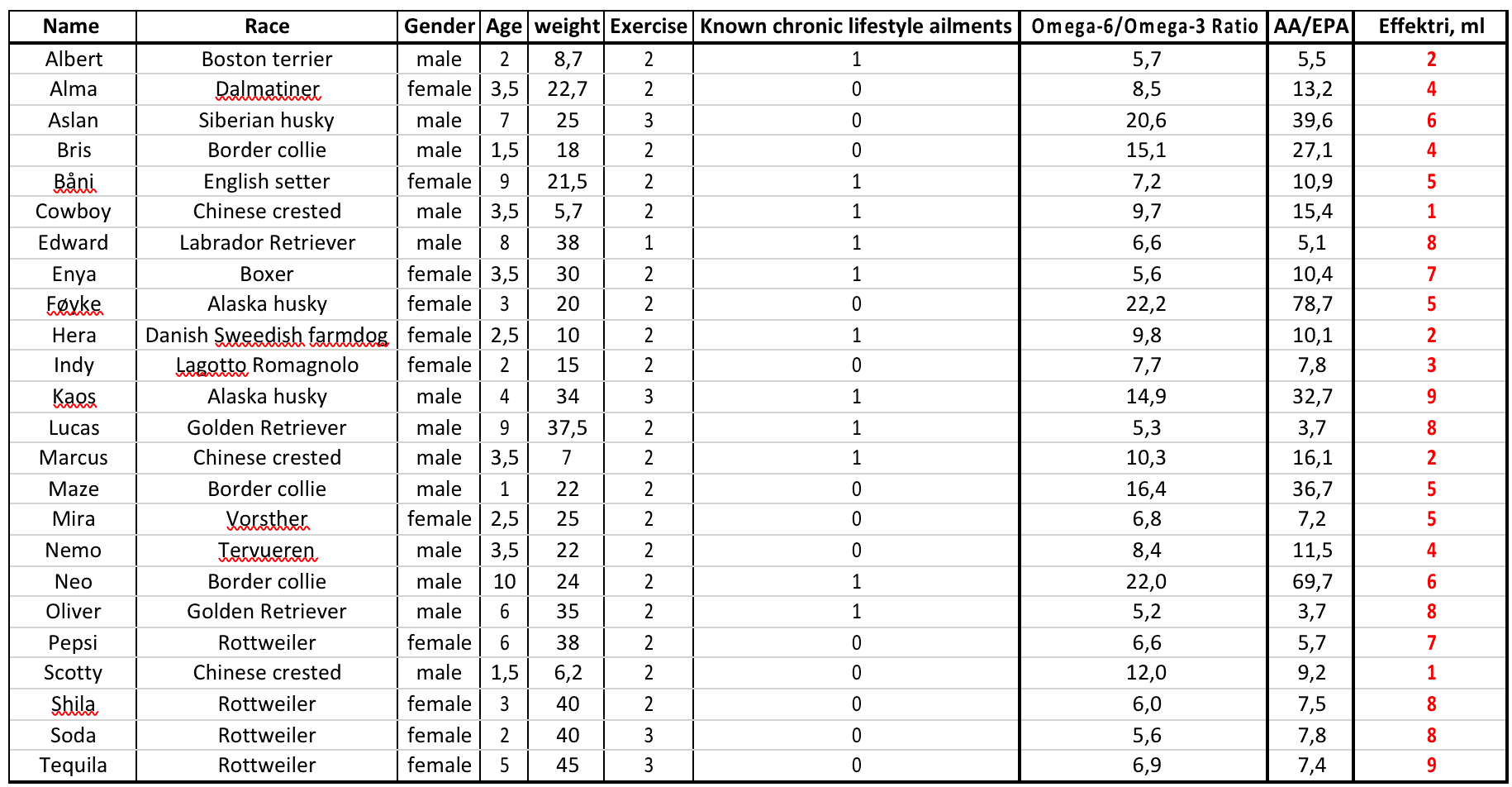
SINTEF – Fisheries and Aquaculture – August 2010. Oil stability index, AOCS Official Method Cd12b-92, average of 3 analysis at 70°C
The scientific opinion of the European Food Safety Authority (EFSA) scientific panel. Protection of blood lipids from oxidative stress. EFSA Journal2011;9(4):2033)
George E. Billman, Jing X. Kang and Alexander Leaf, 1999. Prevention of Sudden Cardiac Death by Dietary Pure omega-3 Polyunsaturated Fatty Acids in Dogs. Circulation, 1999;99:2452-2457
C.E. Lenox and J.E. Bauer. 2013. Potential Adverse Effects of Omega-3 Fatty Acids in Dogs and Cats. J Vet Intern Med 2013;27:217–226.
Selecteer het nieuwsbrief onderwerp voor jou
